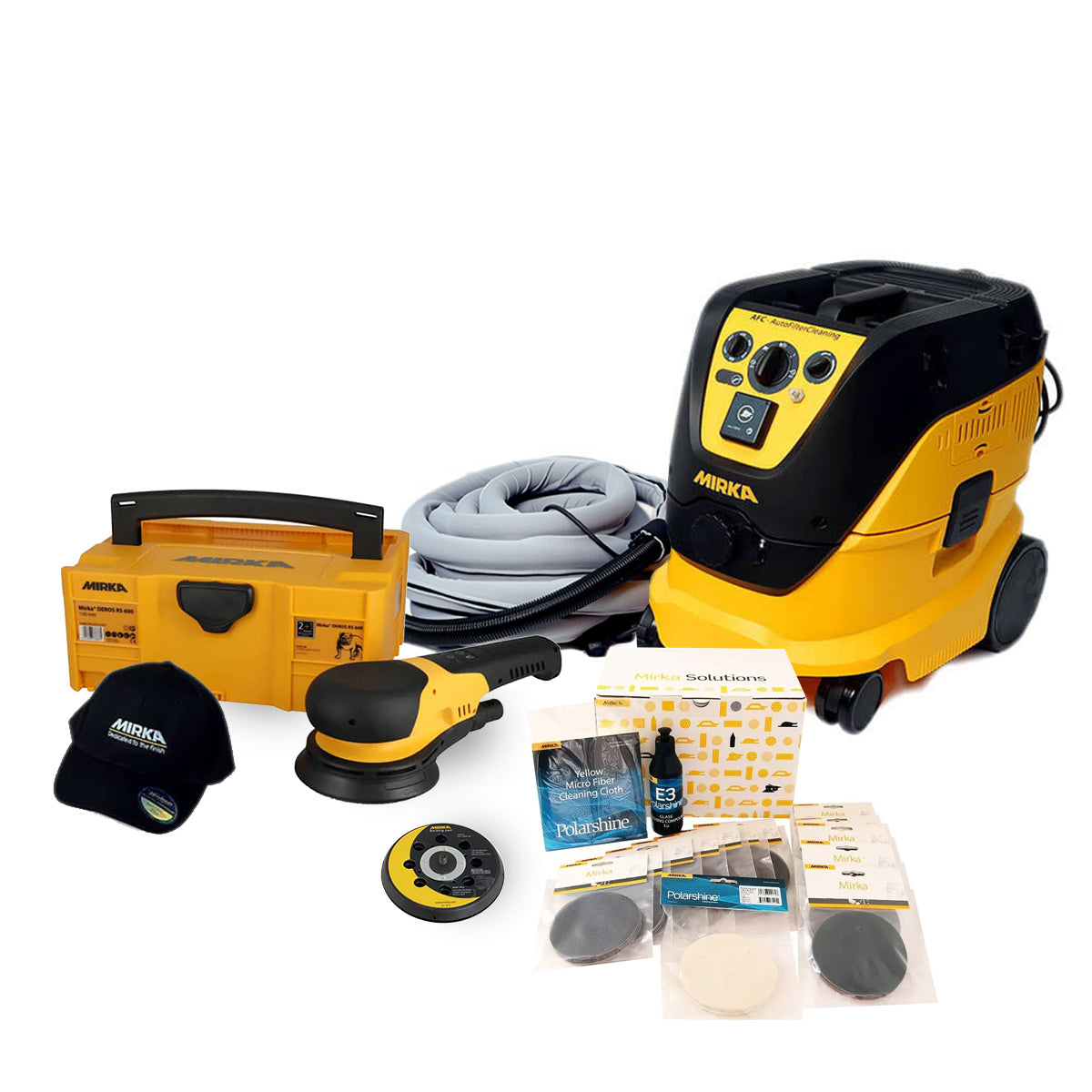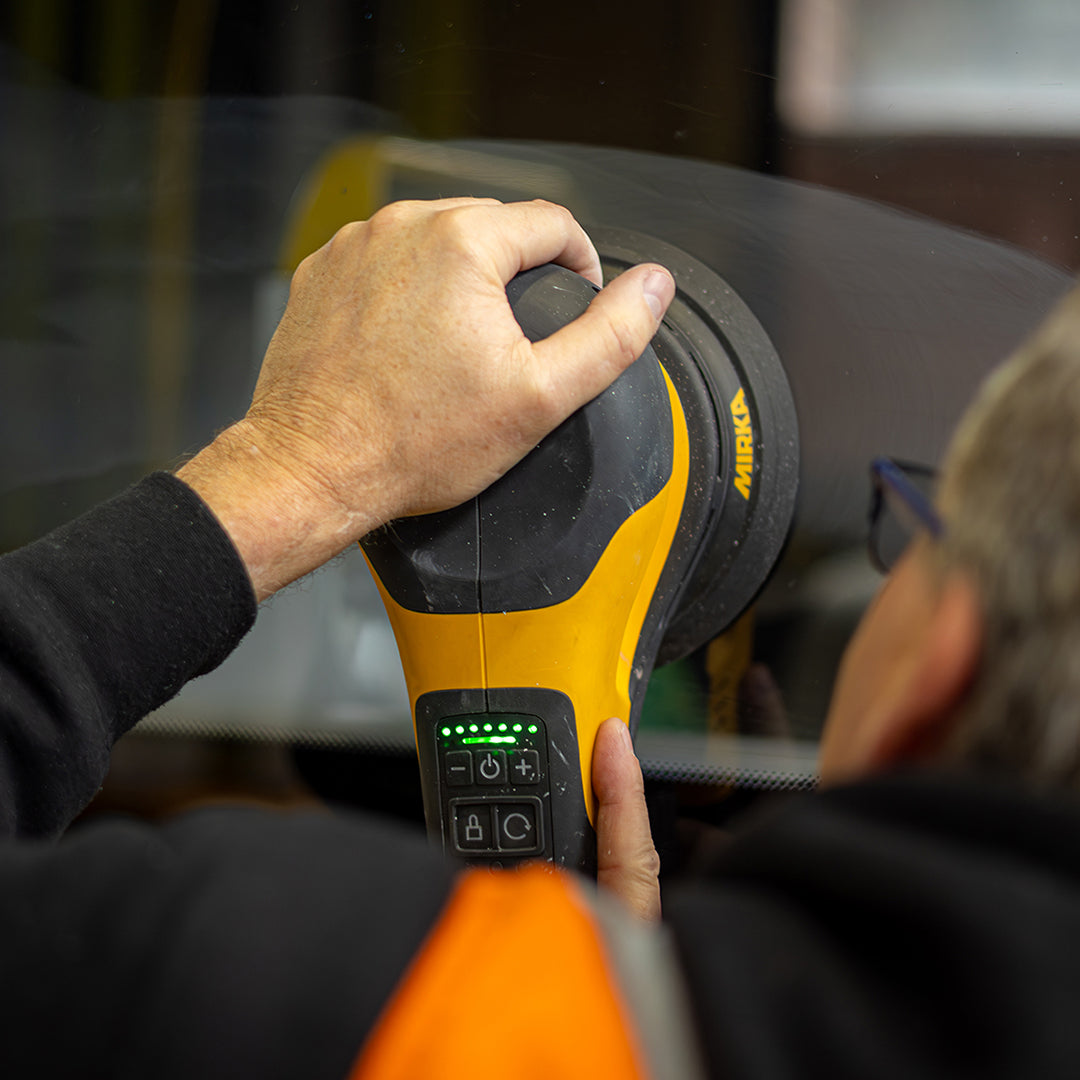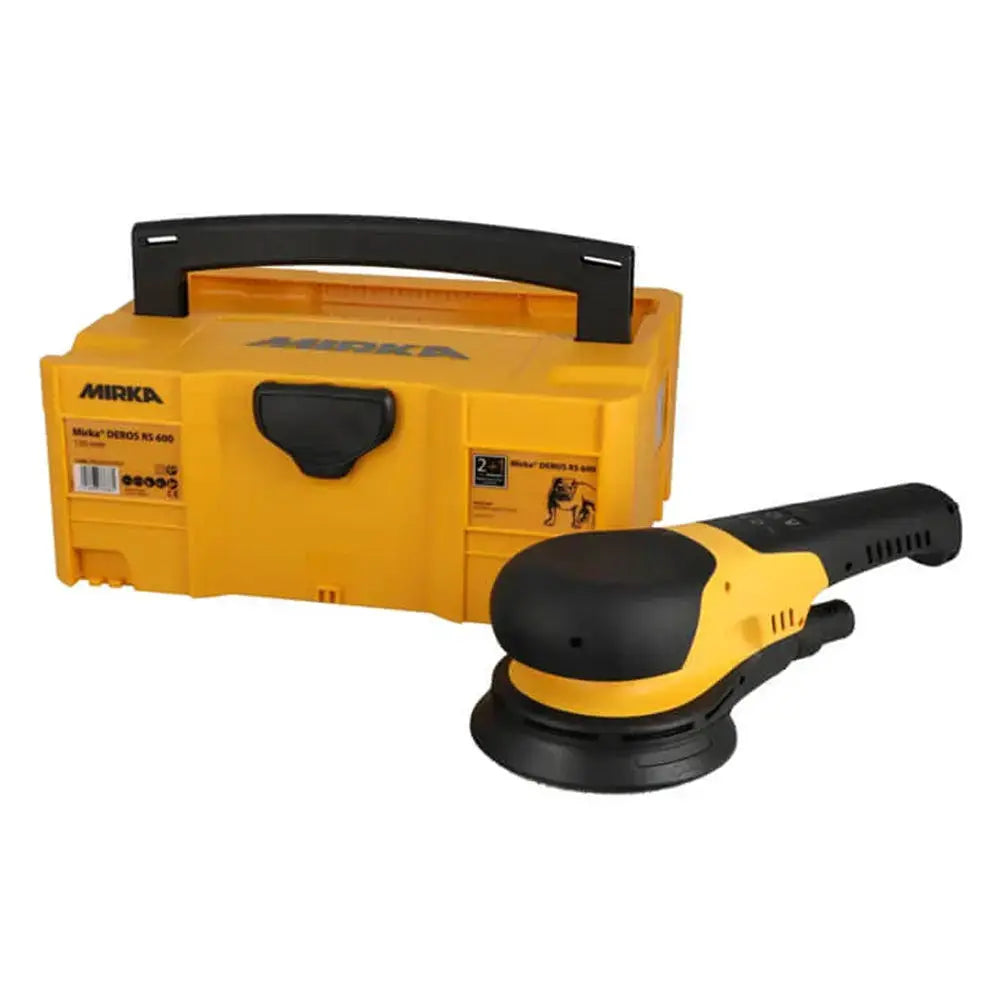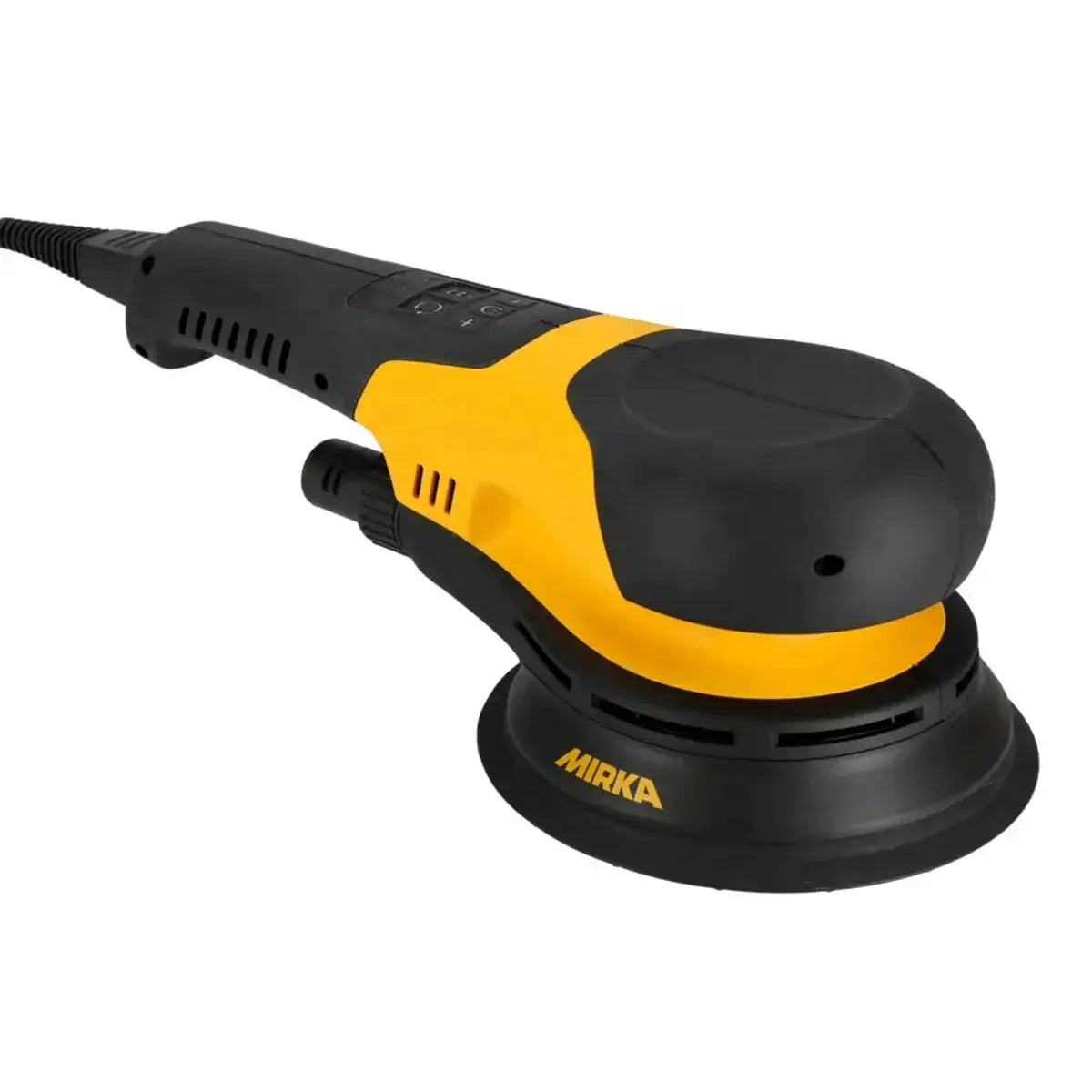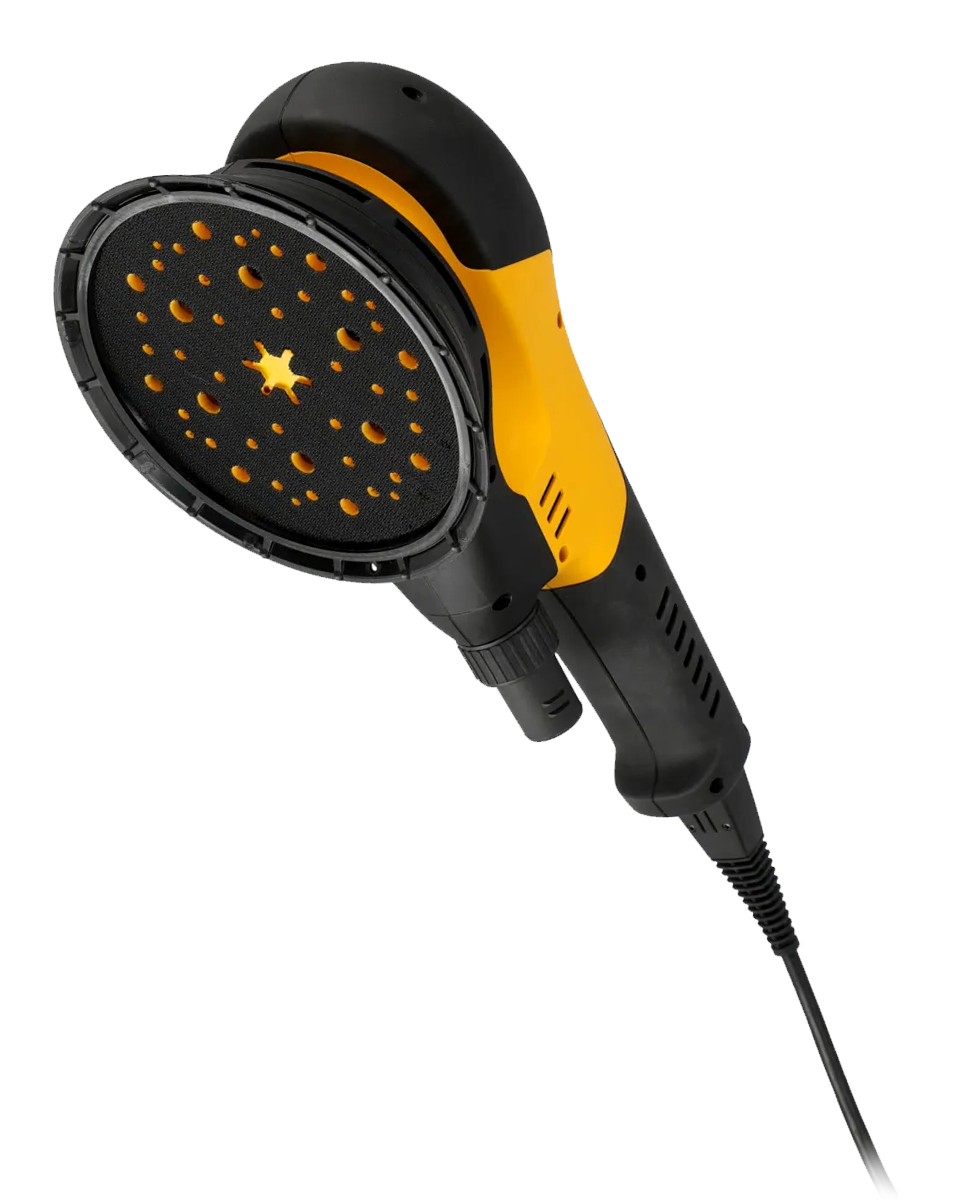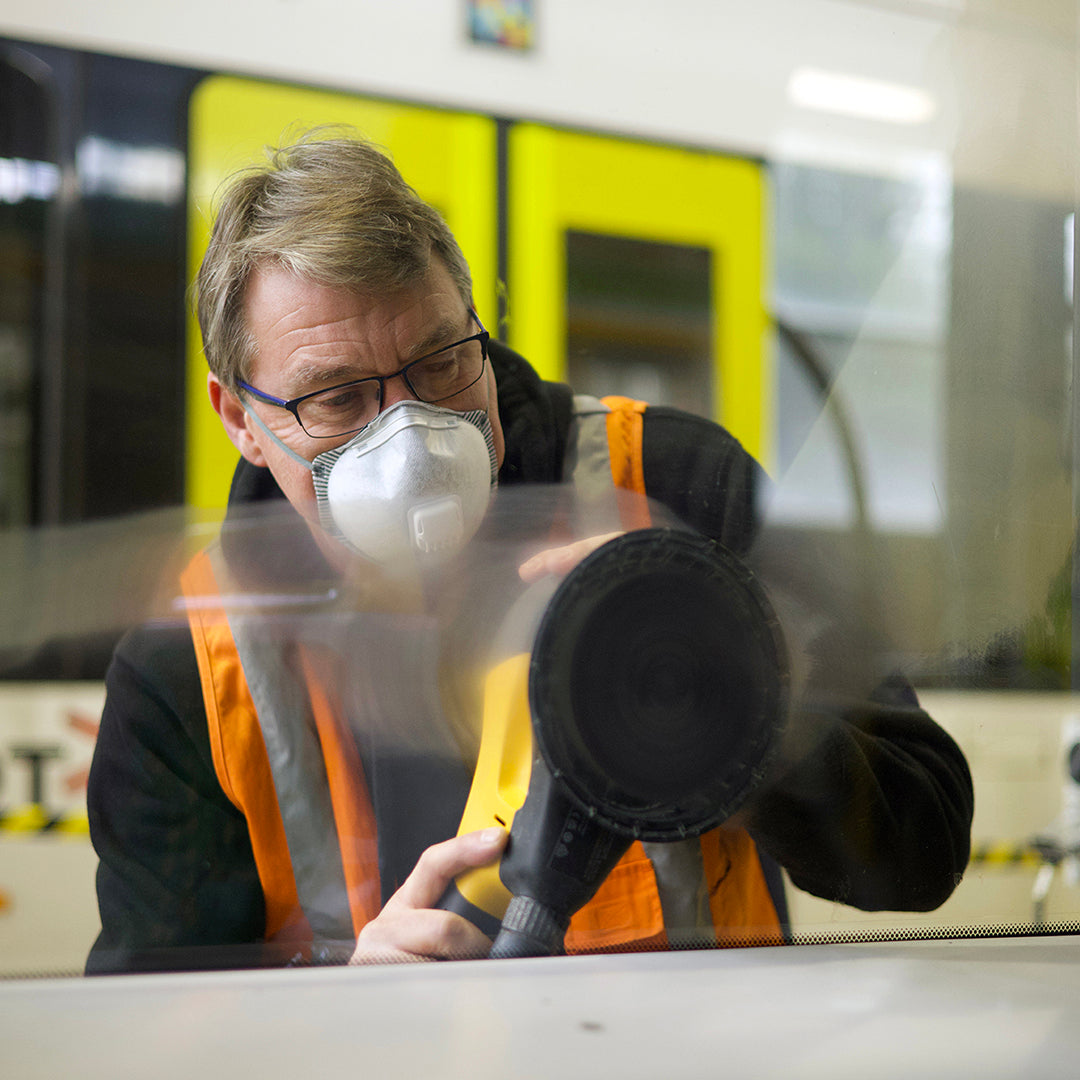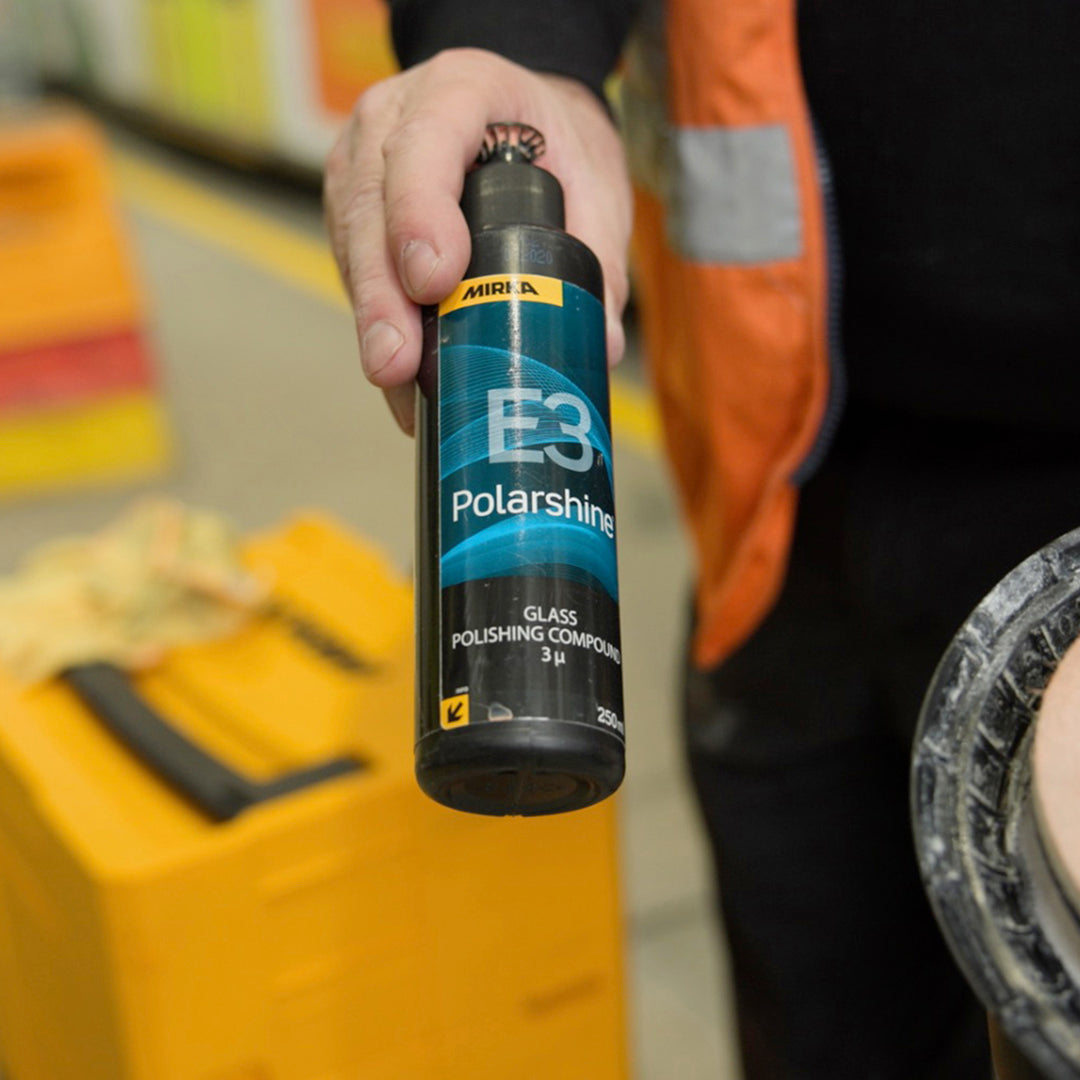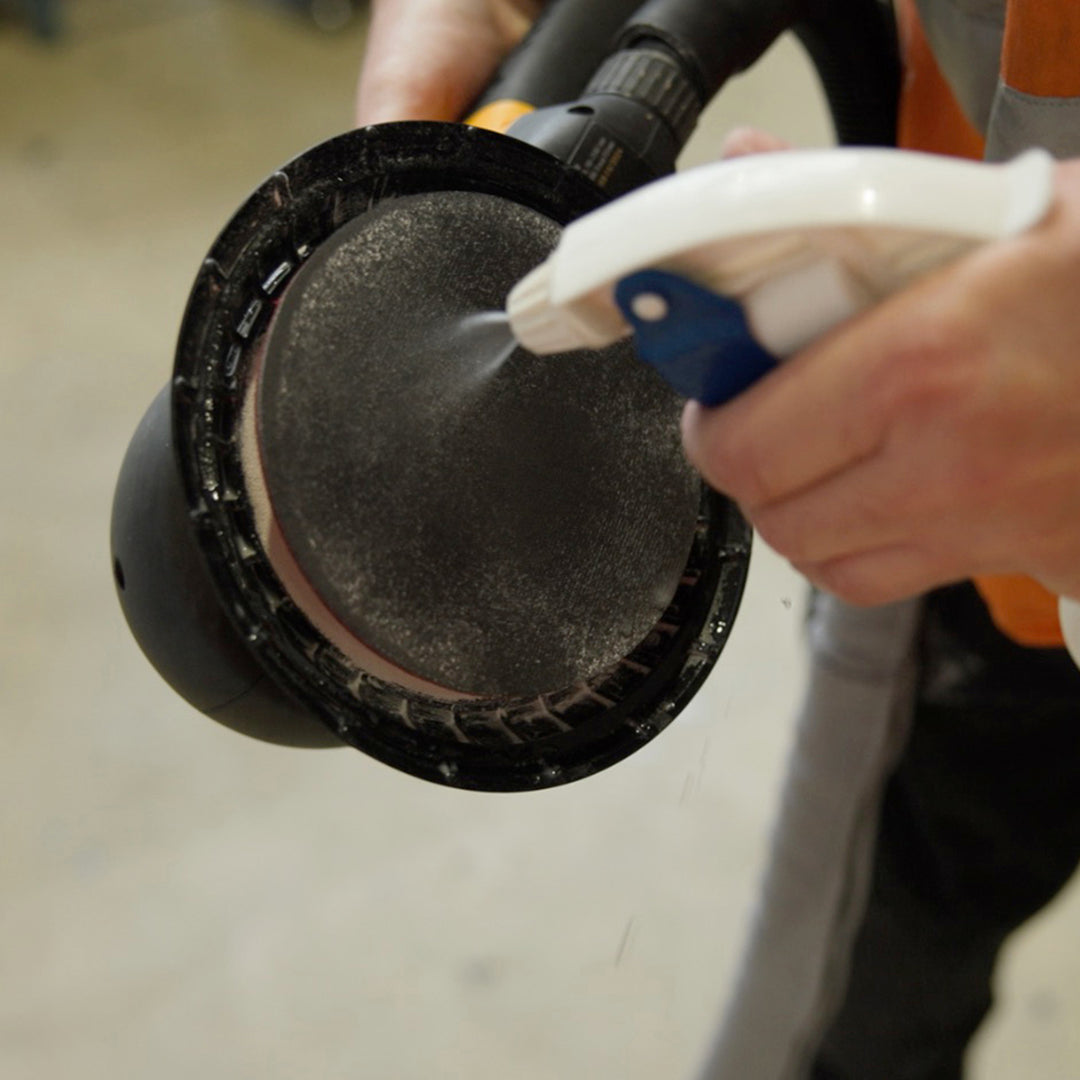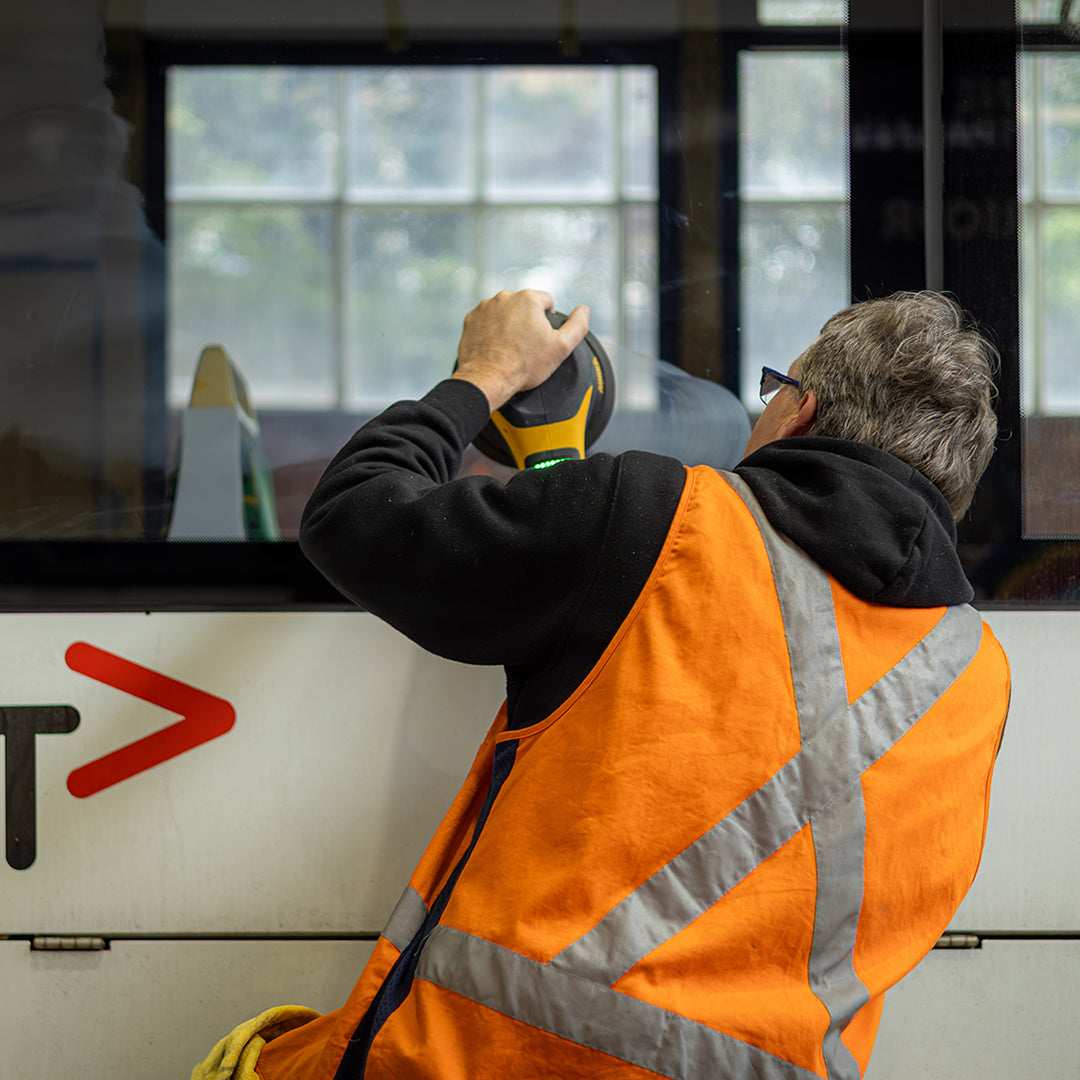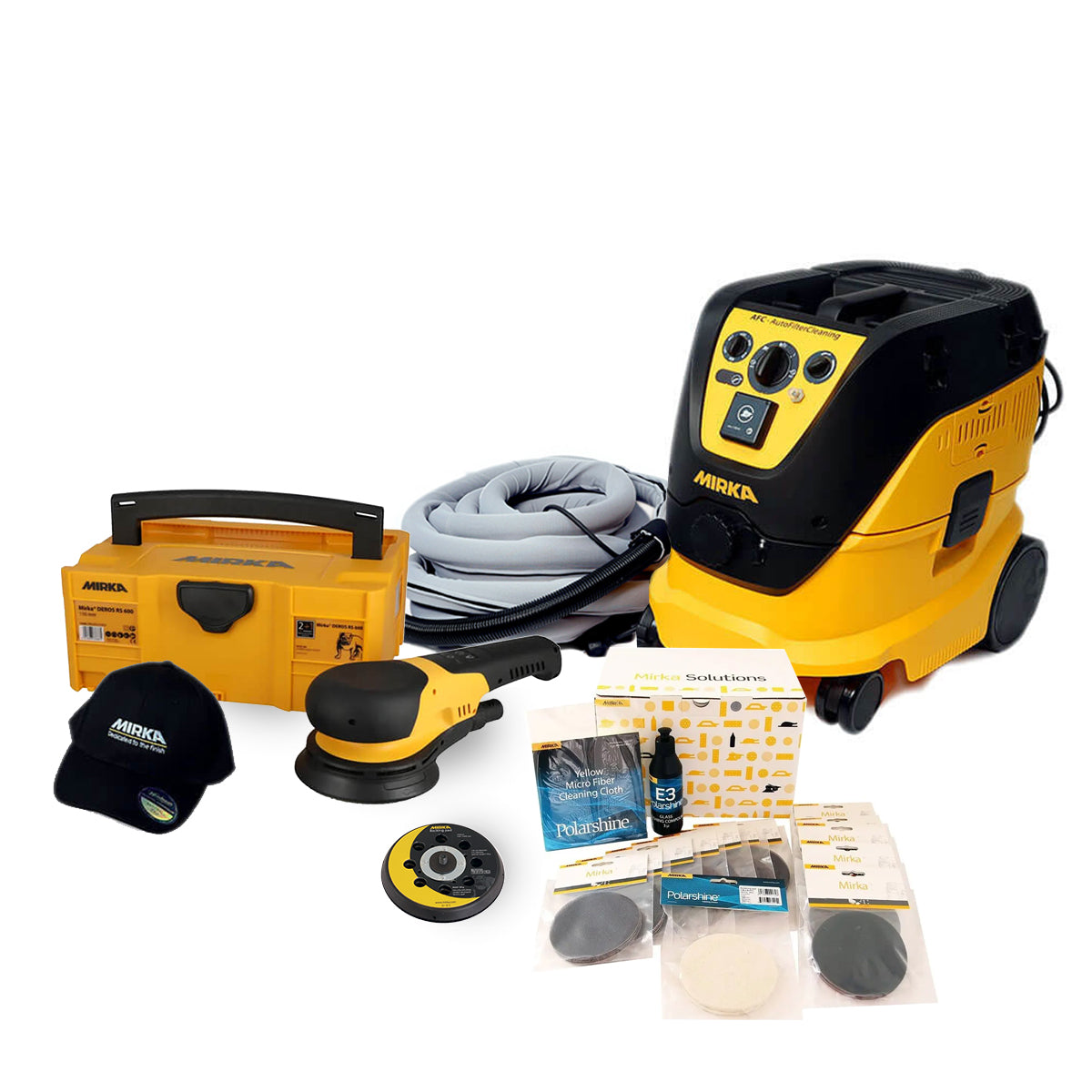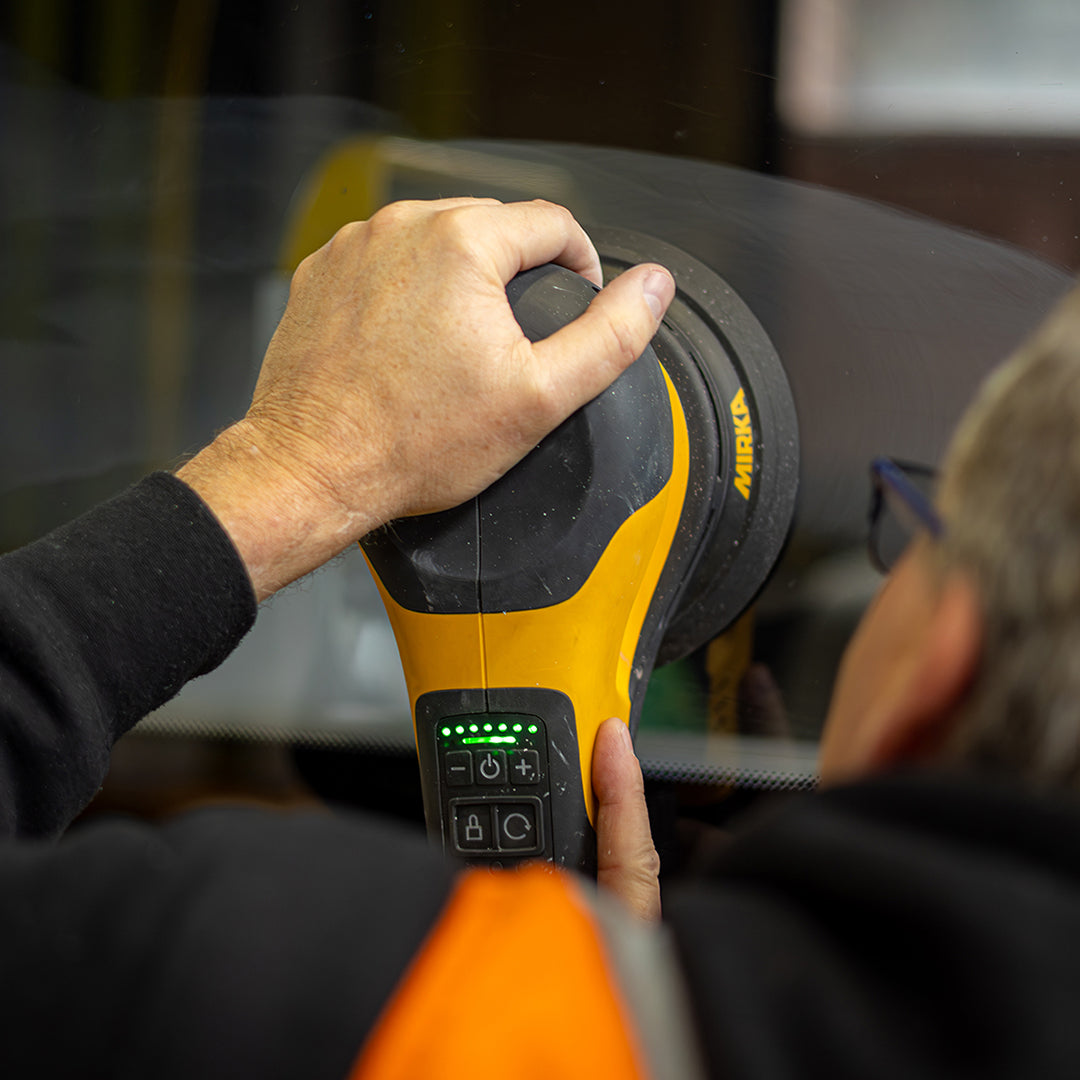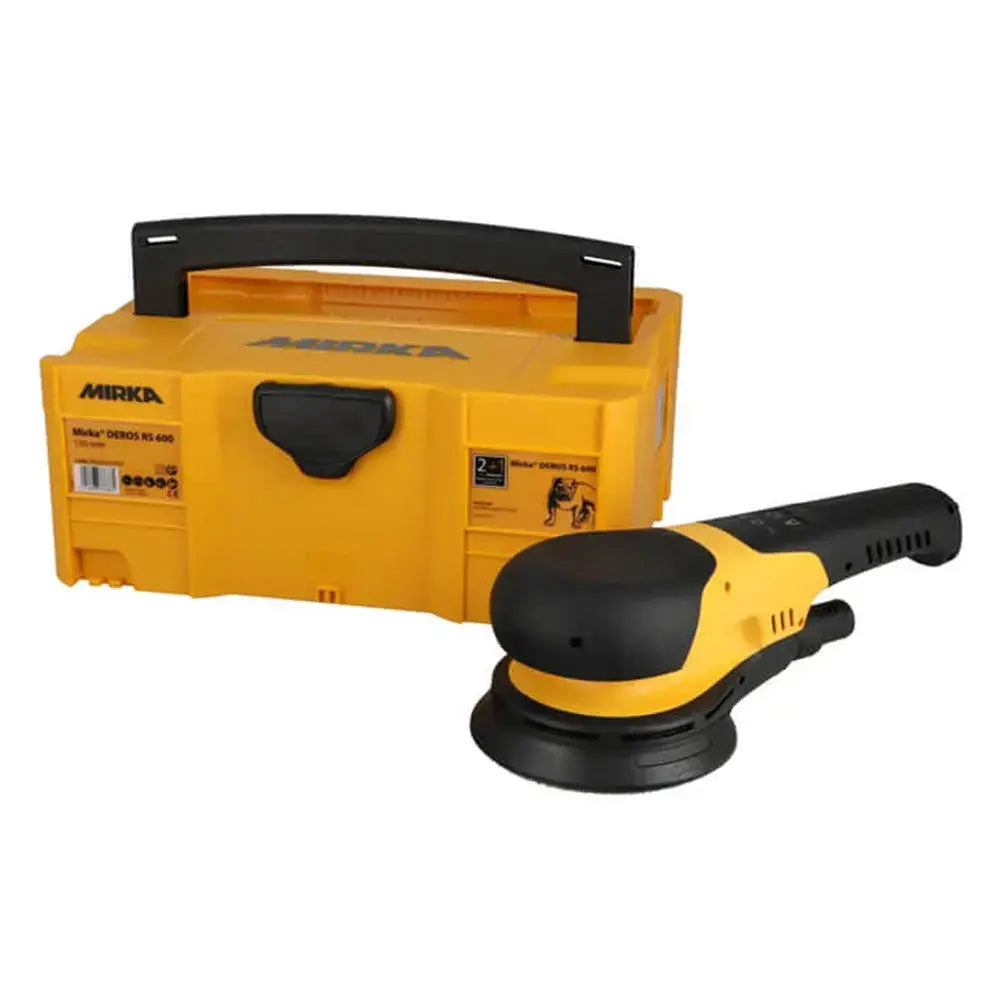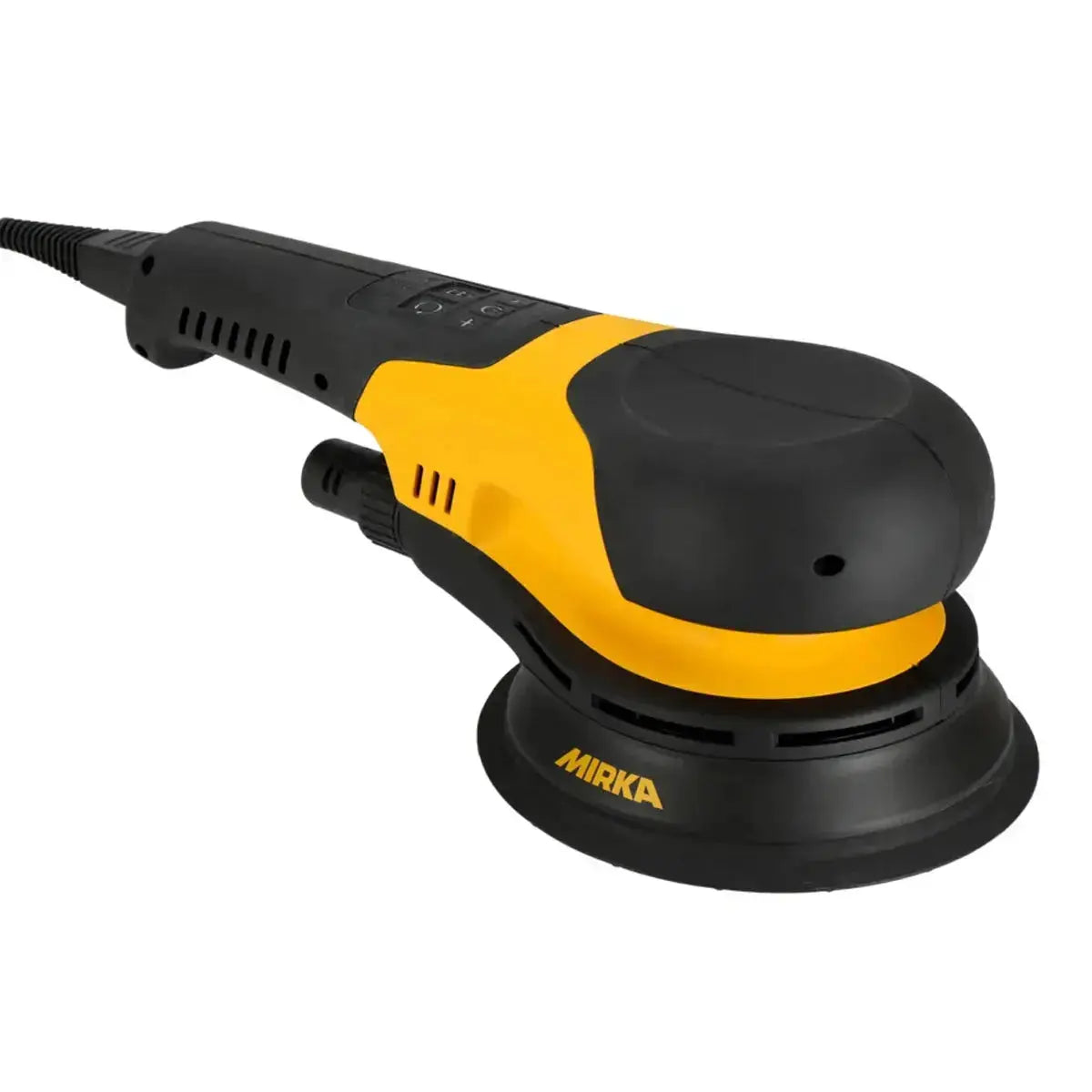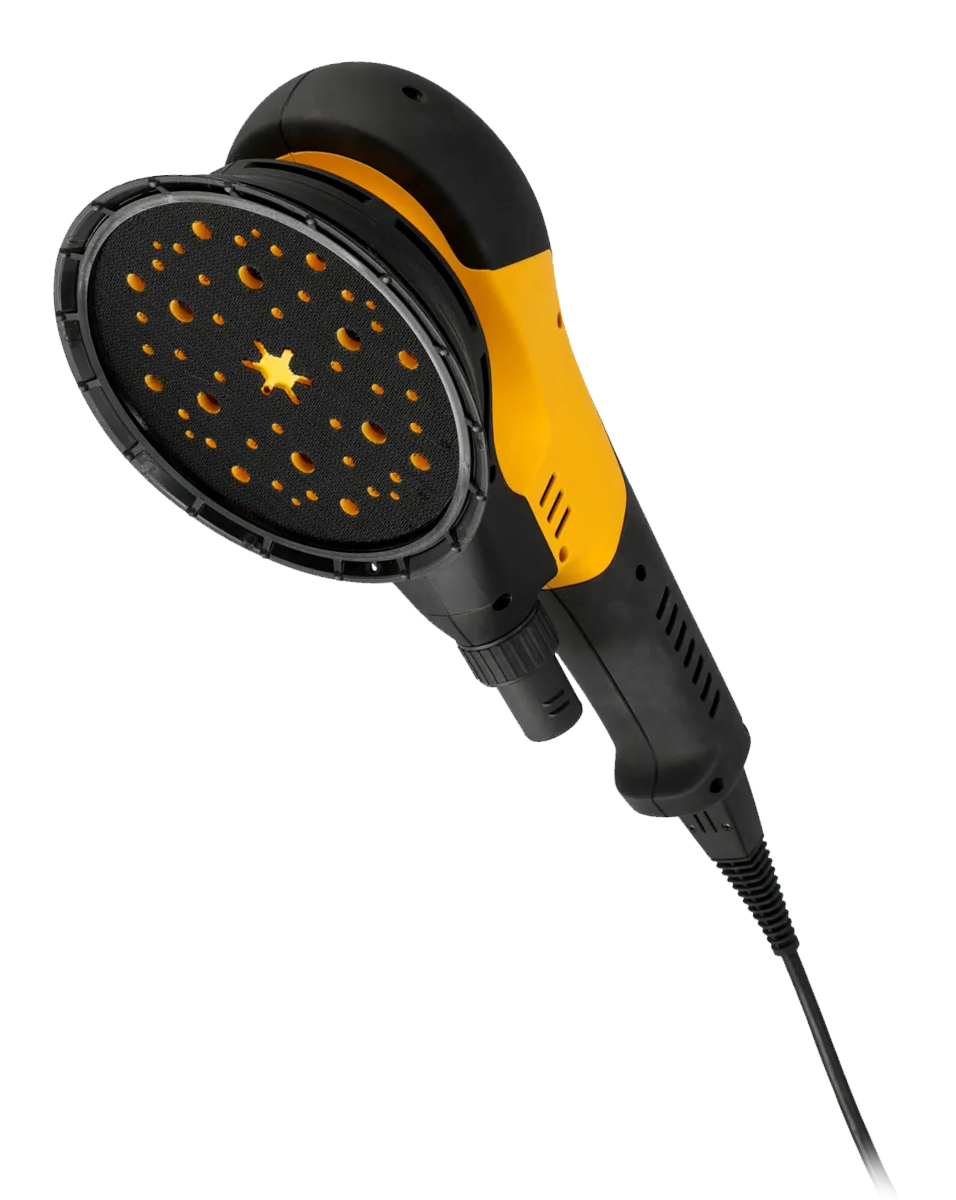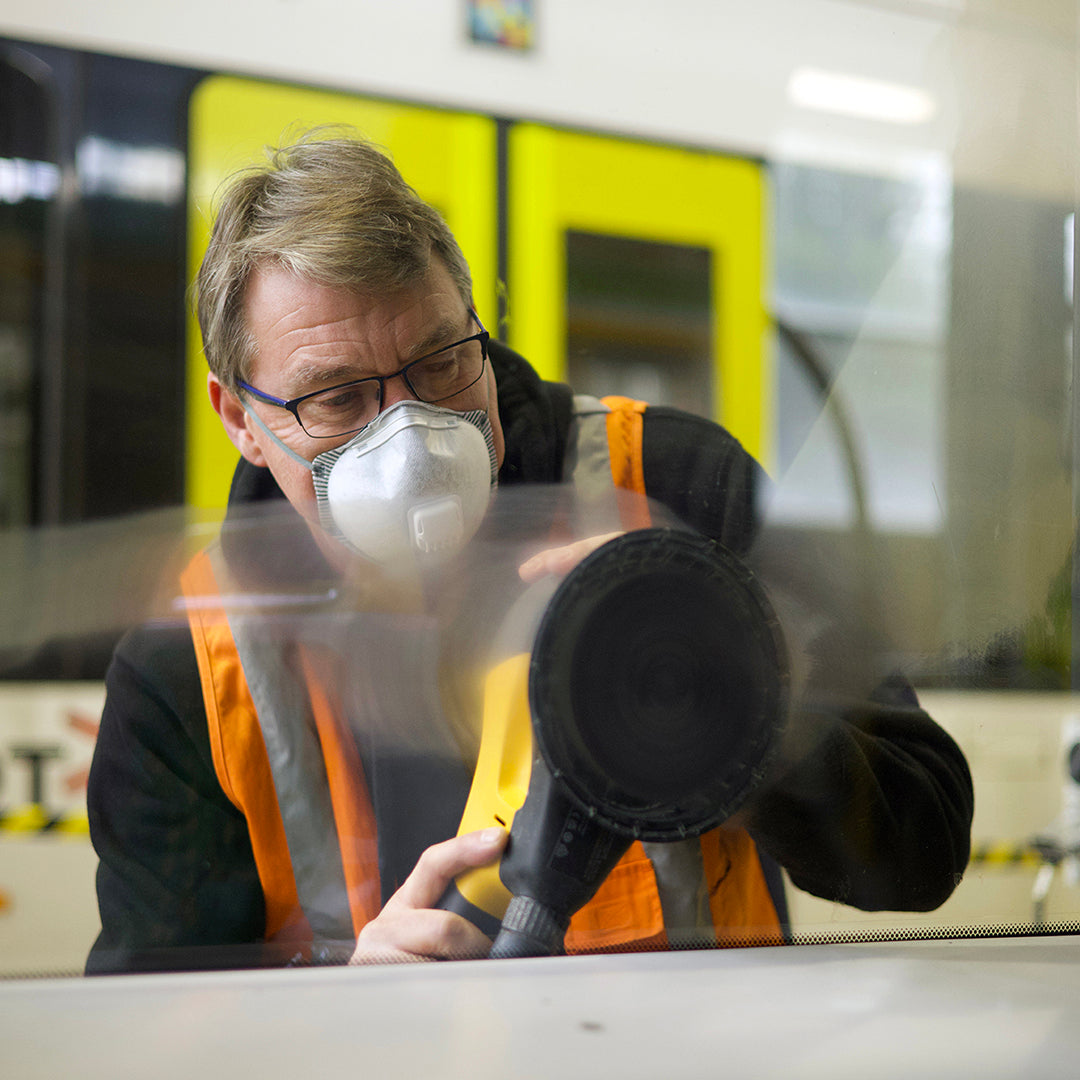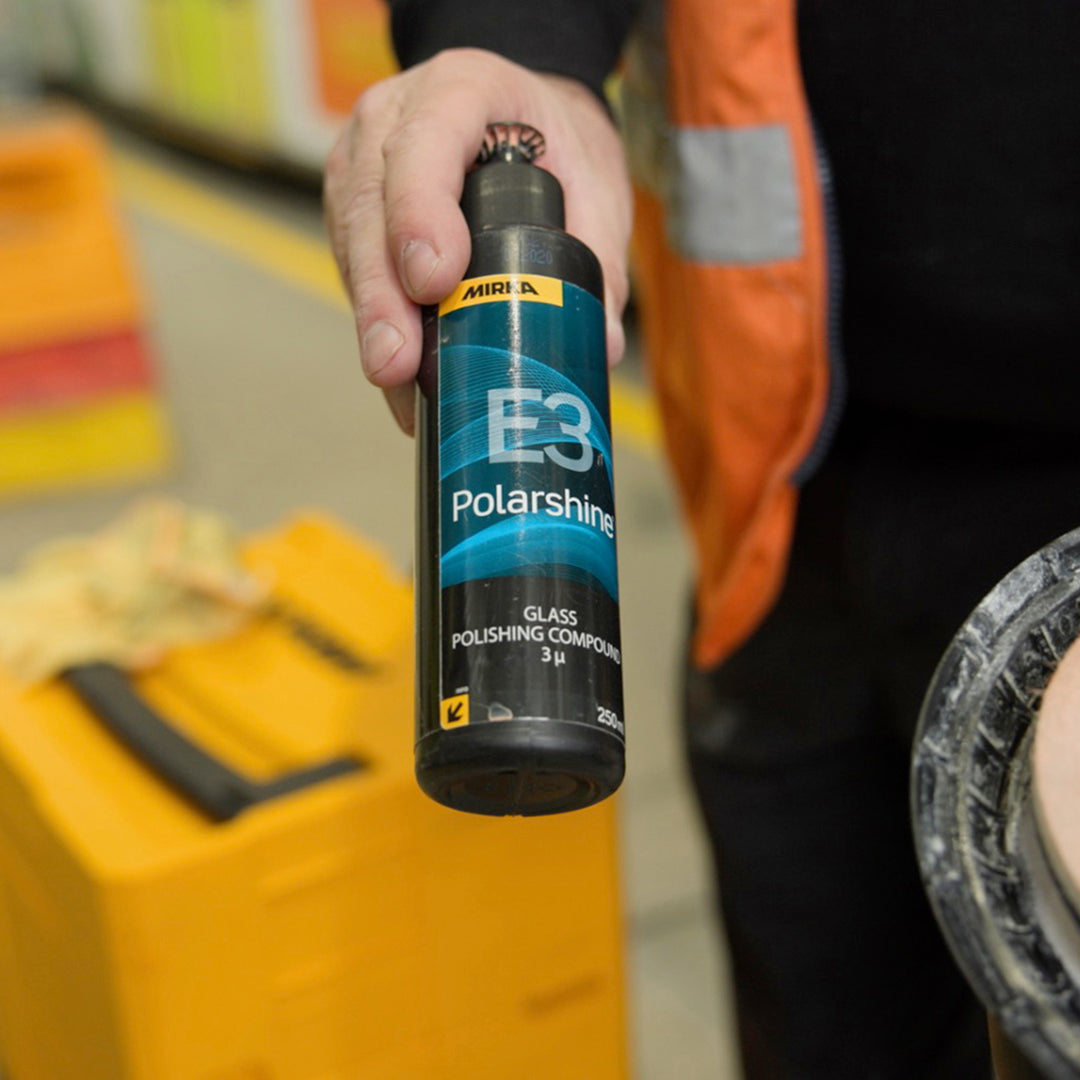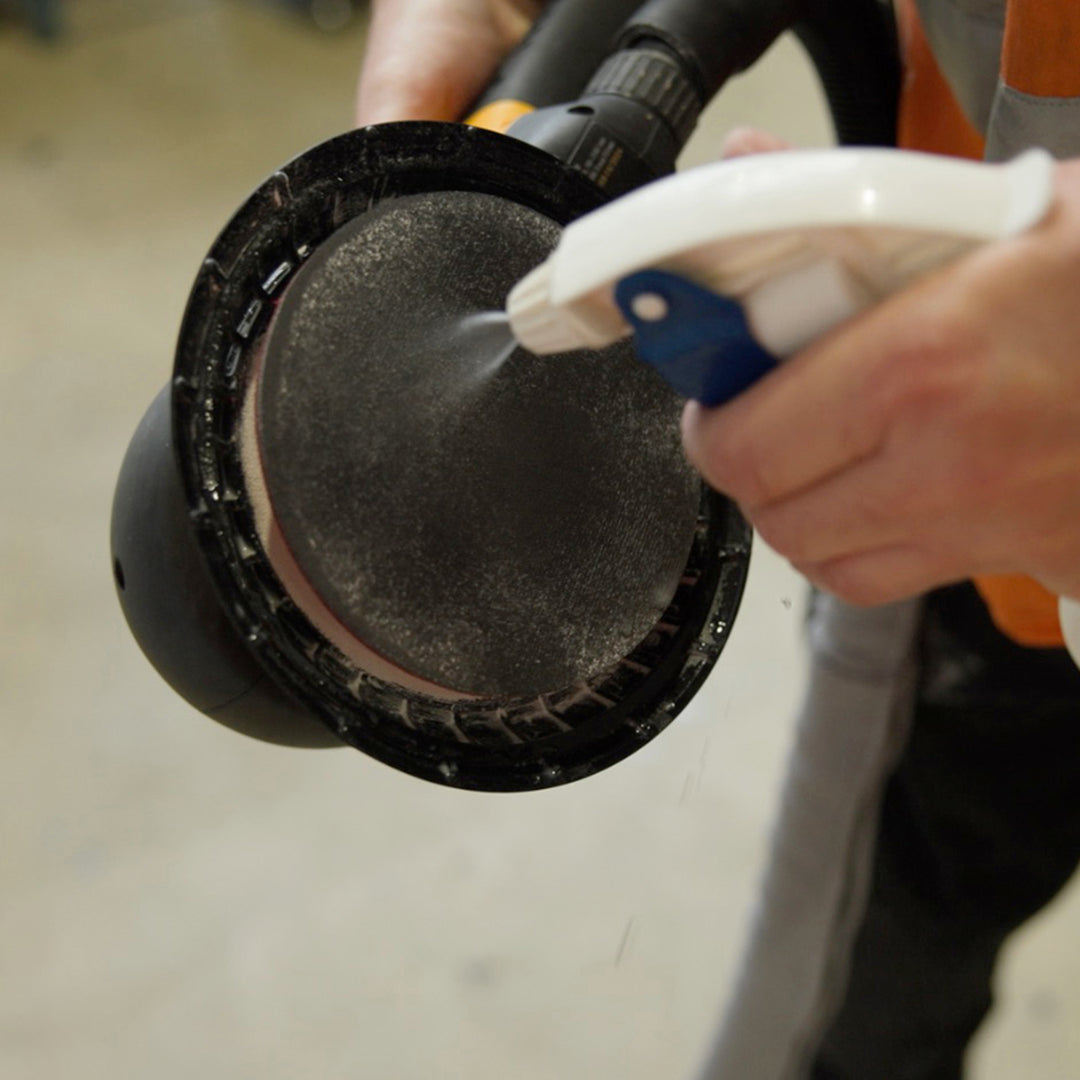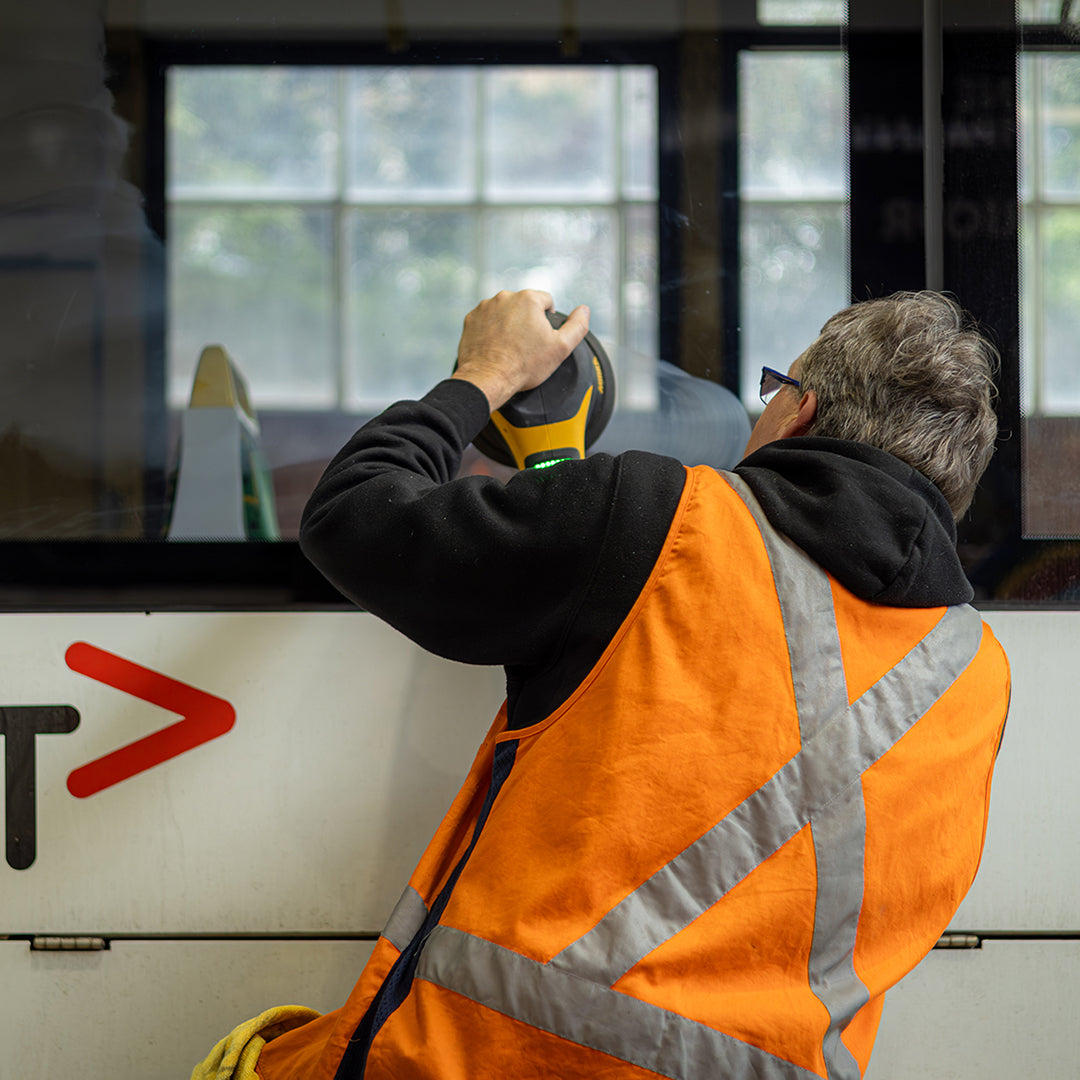Determining the correct grit can be challenging, as it depends on how deep the scratch is. Start sanding with a fine grit, eg. 320 grit, or just polish out the scratch. If the fine grit does not sand enough, use the next coarser grit. This way, you can avoid additional steps when removing the scratches.
The fewer steps necessary to get the job done, the better. Otherwise, there is a risk of optical refraction. The polishing step takes longer than the sanding steps.
- When sanding, keep the machine flat to surface, this will give a better and smoother finish.
- Clean in between the steps to avoid dust from previous steps causing additional scratches.
- Always use a dust protection mask.
- Always start the process by cleaning the surface using window cleaning liquid. Clean the window with e.g., IPA (Isopropanol) and glass cleaner. We recommend you to use both, since they remove different kind of dirt or grease.
- Use foam tape to limit splashing.
- Clean the surface in between every step to remove the dust from the previous step and avoid the dust creating any scratches.
- When using the Mirka Deros RS 600, or any suitable sanding machine, set it to its lowest speed, around 1100 rpm. Keeping the speed low helps to control surface temperature.
- Throughout the entire process, do not touch the glass with bare fingers, as transferred grease will affect the result and in worst case fingerprints will be visible. Use gloves!
- Take sufficient time over each sanding step, it is all about giving each step the time it needs.


